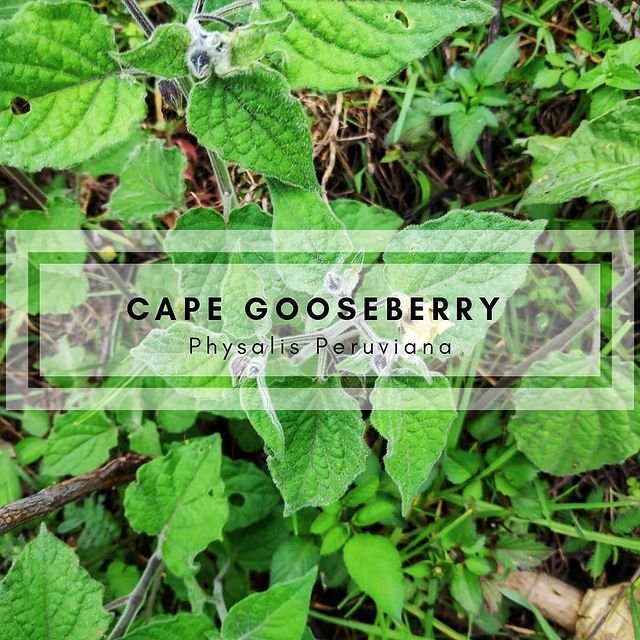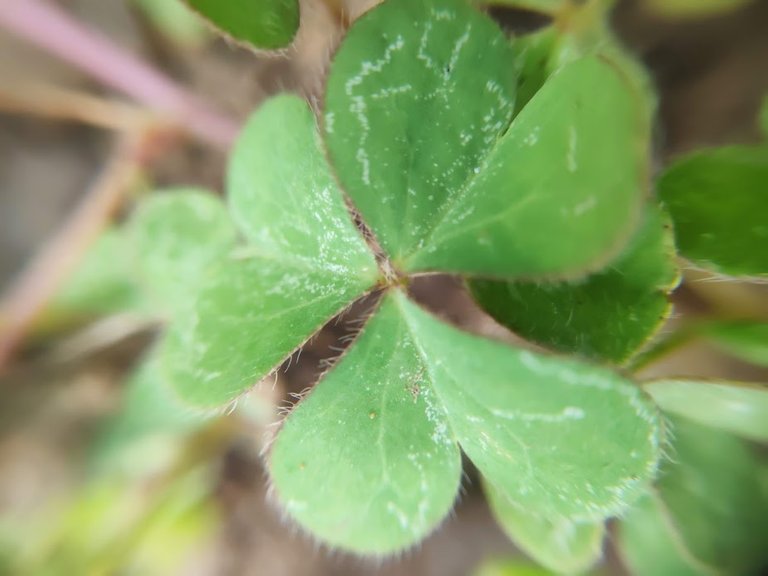
In my time living off the land, one of the things that I felt was imperative was learning about the local flora that grows wild and abundant in our hills all year around. This post is about five wild plants that I found edible uses for.

Process of Identification
Unfortunately a lot of local and indigenous knowledge has been diluted and lost with time as a lot of villagers have shifted to modern ways of thinking, using pumps and sprays, and often neglecting the abundance of nature all around in favour of monoculture cash crops. While there are still some wise old people in the forests, they are hard to access and I couldn't count on a local to help me discover my surroundings. Luckily the advent of technology and a globally connected world with people sharing information allowed me to learn about my environment by tapping into the collective knowledge of herbalists, foragers and wild life enthusiasts across the world. My process of identifying wild plants began with my mobile phone where I used Google Lens to give me an idea of what a plant might be. It wasn't always accurate, sometimes suggesting three or four options which I then followed up with meticulous internet research. Documenting plants at every stage of their growth and corroborating information with my discoveries, using all five senses to see if they matched with what I researched online. Some plants were easy to identify, others a lot harder. Some, I still haven't been able to find out about. Eventually however, I was able to learn more about wild plants that grow in the area, which is such a satisfactory feeling. Being able to pass by an otherwise mysterious clump of green on a hike, and knowing what the plant was and what it could be used for was so invigorating, even allowing for nature snacks on long walks. As such, I documented my findings and will now share with you five edible plants that grow wild in our area.

Wild Edibles
 Starting us off is the Cape Gooseberry plant that is the rarest and also tastiest plant I've been able to find in the wild. The plant can be recognised by its yellow flowers and characteristic calyx that grows as a protective layer around the berry. The berry itself is similar in size to a cherry tomato and tastes like a cross between a tomato and citrus fruit with a lovely zesty tang with hints of sweetness. So delicious!
Starting us off is the Cape Gooseberry plant that is the rarest and also tastiest plant I've been able to find in the wild. The plant can be recognised by its yellow flowers and characteristic calyx that grows as a protective layer around the berry. The berry itself is similar in size to a cherry tomato and tastes like a cross between a tomato and citrus fruit with a lovely zesty tang with hints of sweetness. So delicious!
 The majestic Cape Gooseberry
The majestic Cape Gooseberry
 The Cape Gooseberry flower
The Cape Gooseberry flower

 Wood sorrel is another wild plant with a lemony tang that's best used as a garnish in dishes, especially salads. It's recognisable by its clover/heart shaped leaves that usually grow in clusters of three and the variety in our land has tiny yellow flowers. in very large doses the oxalic acid in sorrel can be poisonous but is generally considered safe if you aren't eating sorrel exclusively for all your meals. This is a wild herb that I've used to enhance the flavours and add depth to many of my homemade meals.
Wood sorrel is another wild plant with a lemony tang that's best used as a garnish in dishes, especially salads. It's recognisable by its clover/heart shaped leaves that usually grow in clusters of three and the variety in our land has tiny yellow flowers. in very large doses the oxalic acid in sorrel can be poisonous but is generally considered safe if you aren't eating sorrel exclusively for all your meals. This is a wild herb that I've used to enhance the flavours and add depth to many of my homemade meals.
 Close up of a wood sorrel leaf
Close up of a wood sorrel leaf
 Close up of a wood sorrel flower
Close up of a wood sorrel flower
 Wood sorrel used as a garnish for a dish I made with rice noodles in a coconut milk broth
Wood sorrel used as a garnish for a dish I made with rice noodles in a coconut milk broth


Everyone knows raspberries, but there also several varieties, one of which grows wild in our area making for delicious picking expeditions. The leaves can also be brewed in tea to accompany those jam sandwiches if you have the patience to collect enough to make jam.
 A bunch of raspberries ready to be picked
A bunch of raspberries ready to be picked


Members of the nightshade family are usually treated with suspicion and doubt perhaps due to the fact that a large number of plants in this family are deadly. There are however a good amount of edible nightshades like the humble potato and tomato. Black nightshade, while sounding like a villain in a B movie is edible if used with caution. The berries can only be eaten when they turn black and are toxic if consumed before they ripen. The leaves can be used in stir fries similar to spinach. This is one of the plants that locals in our area are still aware of and use in their diets. It is known in the local language as 'Mannthakkali' which loosely translates to mud tomato.
 The green berries signify the plant is not yet ready to harvest
The green berries signify the plant is not yet ready to harvest
 The plant is ready to harvest when the berries turn black
The plant is ready to harvest when the berries turn black

 Epazote is also known as Mexican Tea and is used widely in South America. It's most recognisable by an odd scent which smells like a chemical dishwasher. It sounds weird, but if you've ever smelt it you'll know what I mean. It's really good for intestinal and bowel health and is even known to remove parasites. It's great in teas but also as garnish for dishes. The Mexicans use it in bean dishes as it adds a unique depth of flavour and also helps reduce post bean dish flatulence that might be familiar. I've enjoyed using this plant in legume based dishes as it makes it so must tastier and helps digestion.
Epazote is also known as Mexican Tea and is used widely in South America. It's most recognisable by an odd scent which smells like a chemical dishwasher. It sounds weird, but if you've ever smelt it you'll know what I mean. It's really good for intestinal and bowel health and is even known to remove parasites. It's great in teas but also as garnish for dishes. The Mexicans use it in bean dishes as it adds a unique depth of flavour and also helps reduce post bean dish flatulence that might be familiar. I've enjoyed using this plant in legume based dishes as it makes it so must tastier and helps digestion.
 Wild epazote
Wild epazote
 ) Epazote that I've used in a classic Indian yellow dal
) Epazote that I've used in a classic Indian yellow dal

These have been 5 wild plants that I've incorporated into my diet and relished in various dishes in the time since I discovered and initiated a relationship with these beautiful plants. There are a lot more plants around and I will probably write sequel posts eventually.























 )
)























 )
)


Those dishes look delicious :)
Kinda sad about the local knowledge about the area being diluted/diminished, but I guess coming back from that has to be something more compelling than profits at any and all cost (that sounds rather ironic XD).
Thank you, cooking on a daily basis was an amazing skill to have developed. Yes, unfortunately most of the locals are brains washed into thinking modern=good and so didn't really hold on to ancestral knowledge, but it's still there to be found if you know where to look.
I think the only one of these we have around here is the wild raspberry.
I guess we have very different environments. We're mostly tropical bordering on temperate during the colder monsoon months. The coldest it gets is around 6 C though and there's growing happening all year around. I'm curious to know what are the most common weeds in your area. We might have some in common like thistle, nettle, and dandelion.
Those are very common. I would say dandelion is the most prevalent. Thistle shows up in dryer areas especially if the soil is degaraded. There is also nettle but I have to look for it a bit more. Lambsquarters also show up a lot. There are a couple of shorter ground cover type weeds I see all the time but I honestly don't know what they are called. Guess that gives me some home work.
Here where I live during winter there is an abundance of wood sorrel, I made last winter pesto with it, and right now there is plenty of edible mushrooms. I keep saying that I will forage some and never manage to go. Your post REALLY INSPIRED ME TO DO IT, NOW! AHAH
Thanks for sharing such wise knowledge :)
Pesto with sorrel is a great idea I'd like to try sometime. We have a lot of wild mushroom too, some of which I've identified. They taste so amazing! I'm due a mushroom foraging expedition too. Somehow I've been more wary of wild mushrooms than plants as they're trickier to identify, but this is a reminder for me as well to go collect the ones I know for sure can be eaten. Thanks for dropping by.